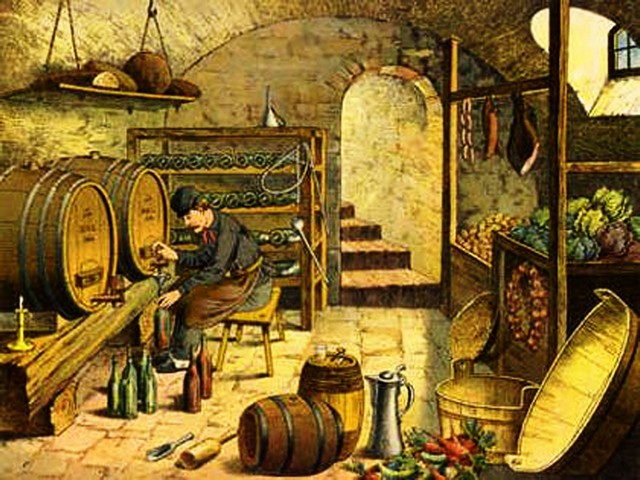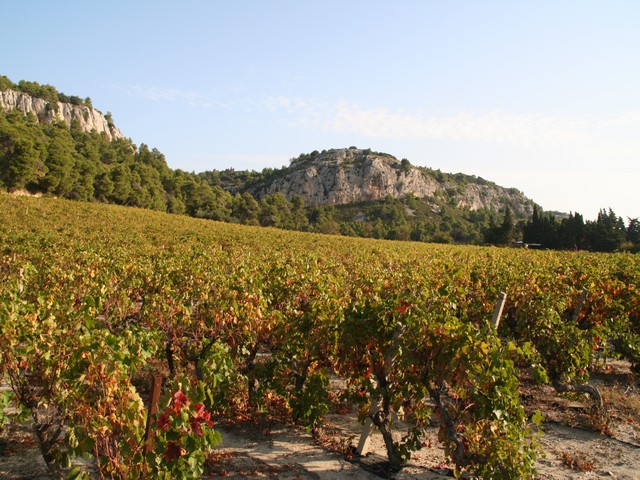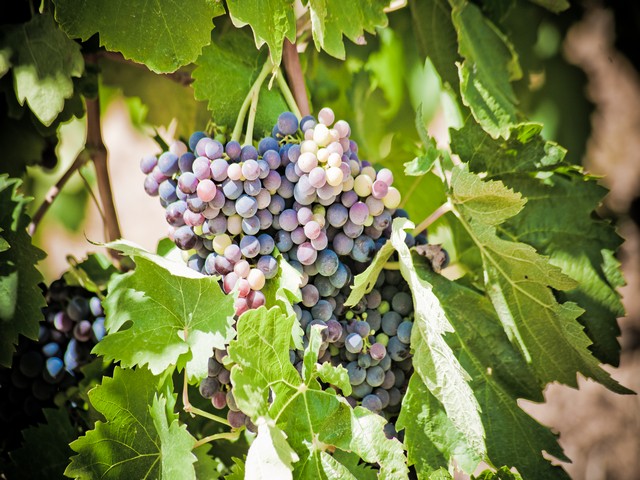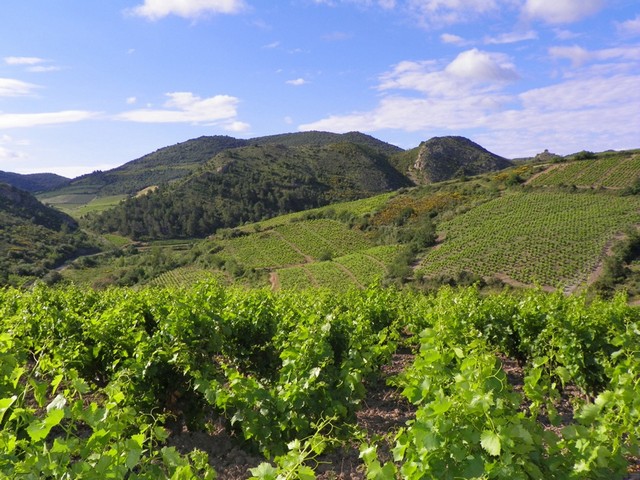With 300 or more days of sunshine each year, temperatures often above 30C and very little rainfall, the grapes of the Languedoc have high levels of sugar and produce concentrated flavours. The rainfall that does occur falls mostly in the winter months and may come in dramatic storms, but the Tramontane wind dries the vines out after the rainfall, keeping them healthy. This Mediterranean climate creates wines high in alcohol with full bodied, ripe fruit flavours, but the wide-ranging soil types of this vast region affect the character of the wine greatly, meaning that there is plenty of variety to be had.

The Minervois
The Minervois wine region runs from Carcassonne to Narbonne and from the slopes of the Montagne Noire to the Canal du Midi. The vast majority of wines produced here are red, with intense black fruit flavours and notes of pepper and spice. Their herby aromas come from the wild garrigue surrounding the vines, where woody shrubs such as rosemary and thyme cling to the stony hillsides.
AOC Minervois-La Livinière
In the heart of the Minervois, you will find the small AOC Minervois-La Livinière – our local AOC. The terroir lies in the foothills of the Montagne Noire, an area known as Le Petit Causse, and comprises vineyards around Azille, Azillanet, Cesseras, Félines-Minervois, La Livinière and Siran. The gently rolling hills provide slightly cooler conditions than in other parts of the Minervois and while the soils here may be schist, limestone or sandstone, all are stony, reflecting heat and retaining humidity in the summer. The resulting wines are deliciously perfumed with good structure, having the acidity and firm tannins needed for ageing.
Local caves
Château Guery, Avenue du Minervois, Azille. Rene-Henri Guery and his mother Madame Guery are very welcoming and happy to give you a tour of the vines as well as tasting. The domain has been in the family for generations.
Domaine de Massiac, Route d’Azille, Azille. Proprietor and winemaker Bernard Boudouresques is totally passionate about his wines.
Domaine les Deux Terres, Rue de la Livinière, Azille. Catherine and Jean-François Prax will give you a warm welcome.
Le Caveau du Silène, Avenue de la Grappe, Azille. The village wine co-operative. Open daily for tastings; friendly service and good-value wine.
Château Massamier La Mignarde, just outside Pepieux, has a tasting room in the cellar, with historic winemaking artefacts adding to the atmosphere. You can also arrange to have lunch here.
Clos Centailles, near Siran, also has a good range of wines and a dedicated tasting cellar, and a tasting here can easily be combined with a visit to historic Minerve.
Corbières
This is the biggest appellation in Languedoc and the 4th largest in France. It produces dense, aromatic reds, perfumed rosés and some herby whites which have been improving in quality in recent years. It’s a large area with varied terroir – and a wide variety of wines to match. The reds tend to be rather more rugged in character than those of the Minervois, while the whites can be headily aromatic.
Château Pech-Latt, Ribaute (near Lagrasse), is one of the leaders of organic viticulture in this region, producing some very good wines with depth and complexity. The manager Philippe Mathias has a small estate of his own, Clos de l’Anhel (lamb fold in Occitan). You should be able to taste these wines as well while you are there, and may be able to visit the vineyard if you book in advance. Visit here in combination with lunch or dinner in picturesque Lagrasse.

AOC La Clape
La Clape is a rather wonderful AOC of just 625 hectares, producing 80 per cent red wine. The garrigue surrounding the vineyards – with pine trees, thyme, rosemary, juniper and cistus bushes – contributes distinctively Mediterranean aromas to the wines produced here. The soil is rocky and dry, but sea mists and breezes provide moisture.
There are 36 independent producers in the AOC and many welcome visitors. One such is La Clape Château d’Angles: vigneron Eric Fabre was previously a director of Château Lafite Rothschild. All production and bottling takes place on the estate and his wines have won more than 35 gold medals since 2002.
The Massif du Clape is a marvellous place for hiking, so why not combine a tasting trip with a good walk?

Wine tours with a difference
Taste du Languedoc, based in Azille, combines wine tasting with gastronomy, history and even hikes and picnics. Options include wine tasting at La Clape, with gourmet seafood; shopping for truffles, followed by a walk in the Montagne Noire and a picnic with wine tasting; a tasting afloat on the Canal du Midi; and family days which include art and craft activities for children. Alternatively, you can book a tasting in the home comforts of La Maison Lautrec. Taste du Languedoc Wine Tours
